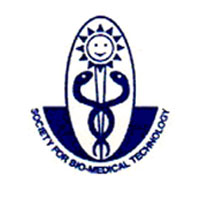IMPROVED SURGICAL TOOL FOR MINIMALLY INVASIVE SURGERY   SBMT, in collaboration with Indian Institute of Science (IISc) and Bangalore Endoscopic Surgery and Training (BEST) Institute has completed development of an improved surgical tool for minimally invasive surgery. The aim of the project was to develop improved laparoscopic tools that are more similar to a human arm with a wrist joint. SBMT, in collaboration with Indian Institute of Science (IISc) and Bangalore Endoscopic Surgery and Training (BEST) Institute has completed development of an improved surgical tool for minimally invasive surgery. The aim of the project was to develop improved laparoscopic tools that are more similar to a human arm with a wrist joint.
The improved laparoscopic tools, shown in figures above, overcome the lack of dexterity in minimally invasive laparoscopic surgery to a large extent. The new tool has an additional joint near the cutting/grasping end and one can actuate this joint using a finger as normally done for other degrees of freedom. This joint allows one to approach the organ/tissue or the object being cut/grasped etc. at different angles and not only from one direction as in existing laparoscopic tools. The increased dexterity allows the surgeon to avoid obstacles, other organs, access the surgery area more easily and provide a better view of the surgery area. The effect of the additional joint is similar to bending of the fingers and the resulting flexibility and increased dexterity during surgery. An important feature of the new design is that the degrees of freedom available in existing tools are in The effect of the additional joint is similar to bending of the fingers and the resulting flexibility and increased dexterity during surgery. An important feature of the new design is that the degrees of freedom available in existing tools are in no way constrained or affected by this extra joint. Our indigenous tool is expected to be produced and marketed at lower prices in comparison to imported tools with similar functionality.
Technology is ready for transfer to a suitable industry.
|

















